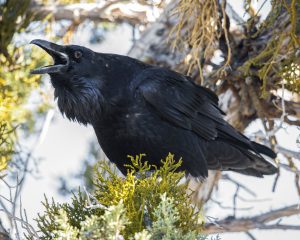

When winter settles over the Great Smoky Mountains, the landscape might appear quiet and still. Leaves are gone, roots and bulbs sleep beneath the frost, and the air grows crisp. But for those who look closely, the Smokies still hums with life—especially birds. Each year, from December 14 through January 5, the National Audubon Society’s Christmas Bird Count invites bird lovers to take part in one of the longest-running community science projects in North America.
Since the Smokies’ first official count in 1935, birders have gathered with binoculars, notebooks, and steaming mugs to record any winged visitor or resident they might observe. The tradition invites casual observers and experts alike, linking them to a global network of volunteers who together create a nuanced picture of avian abundance and distribution.
The Christmas Bird Count began in 1900, when ornithologist Frank M. Chapman proposed a peaceful alternative to the then-popular holiday “side hunt,” in which teams competed to shoot as many birds as possible. Chapman’s idea—to count birds rather than hunt them—took hold, and today, about 80,000 participants in the Americas join in each winter. The count celebrated its 125th year in 2024.

According to Audubon, each count takes place within a designated 15-mile-wide circle, where groups spread out to identify and tally birds over a single 24-hour period. In the Smokies, this effort covers a landscape unlike any other, ranging from low-elevation cove forests to spruce-fir peaks often rimed with snow.
Birding in the Smokies
For birders, Great Smoky Mountains National Park is a place of endless fascination. Naturalist Fred J. Alsop III, author of the Smokies Life field guide Birds of the Smokies, has found the park an ideal place for birding.
“Great Smoky Mountains National Park—what a magnificent place to look at birds,” he writes. “Here is a vast area of virtually unspoiled forests, broken only in a few small areas by man-made clearings in low-elevation coves.”
Roughly 60 species of birds can be found in the Smokies year-round. As temperatures drop, some of these hardy residents simply shift to lower elevations to escape the deepest cold. Chickadees, nuthatches, and woodpeckers stay active, often visiting feeders or flitting through the bare branches in search of food. A winter birder might see a raven, dark-eyed junco, red-breasted nuthatch, or black-capped chickadee, among others.

Birders scanning the woods and fields in December have a better view when deciduous trees drop their leaves. However, Alsop advises, except for their call notes, few birds will be singing, and weather can be an issue for observers.
“Birders should be prepared to dress for cold, windy, and wet conditions,” Alsop writes.
Counting birds, building knowledge
Each year’s Christmas Bird Count in the Smokies adds another layer of data to the long-term record. Over the decades, these counts have become an essential tool for understanding bird population trends and habitat use.
In the park, an average day’s count can vary, year to year, with weather, elevation, and observer experience. Depending on the conditions, participants may observe many species in the park, everything from common species to less-expected visitors. Every sighting matters, contributing to data used to track changes over time.

Participation in the Christmas Bird Count is open to everyone—no special equipment or expertise is required. Beginners are always welcome and can be paired with more experienced birders. Those who live within an established count circle can even contribute from home by watching their feeders and recording what they see.
To find and join a local count, visit Audubon’s website, which offers an interactive map and contact information for each count circle leader. In the Smokies region, counts are coordinated through a local compiler, typically from an Audubon chapter, who plans routes, gathers results, and celebrates afterward with tallies and stories from the field.
So this December, bundle up, grab your binoculars, and join the count. You’ll be part of a living tradition—one that celebrates both the birds and the people who love them.
Subscribe to get the latest posts sent to your email.
The Great Smokies Welcome Center is located on U.S. 321 in Townsend, TN, 2 miles from the west entrance to Great Smoky Mountains National Park. Visitors can get information about things to see and do in and around the national park and shop from a wide selection of books, gifts, and other Smokies merchandise. Daily, weekly, and annual parking tags for the national park are also available.